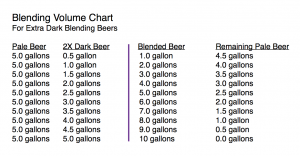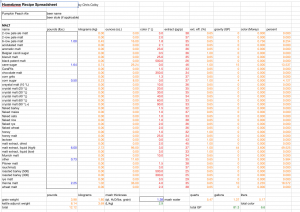 Here is my recipe for session IPA. (There’s no shrimp in the recipe, the name is just “jumbo shrimp” and “session IPA” — two combinations of words that seem nonsensical to some — jumbled together.) This recipe is based on my Roswell IPA, a “regular” American IPA. The way I converted my AmericanIPA recipe to a session IPA recipe should work with any American IPA. My ideas on what a session IPA should be like are spelled out in a previous article, and should explain the decisions I’ve made during recipe formulation.
Here is my recipe for session IPA. (There’s no shrimp in the recipe, the name is just “jumbo shrimp” and “session IPA” — two combinations of words that seem nonsensical to some — jumbled together.) This recipe is based on my Roswell IPA, a “regular” American IPA. The way I converted my AmericanIPA recipe to a session IPA recipe should work with any American IPA. My ideas on what a session IPA should be like are spelled out in a previous article, and should explain the decisions I’ve made during recipe formulation.
To start with, I took my original grain bill and subtracted pale malt until I hit a “sessionable” range, in this case 4.6% ABV. I kept the same amounts of crystal malt (and Vienna malt) as in the original, but double checked that the percentage of crystal was definitely under 7.5%. (It was.) My second, and final step, was to lower the amount of bittering hops to keep the BU:GU ratio (at least roughly) the same. My Roswell IPA had an OG of 1.068 and 67 IBUs, for a BU:GU ratio of 1.01. My new session beer had an OG of 1.044, so I adjusted the IBUs down to 44 for a BU:GU ratio of 1.00. I only changed the amount of the first hop addition. I left the amounts of late addition hops and dry hops the same, as I definitely wanted all the flavor and aroma of hops in my session IPA. That’s it. If you have an IPA you like, performing these two steps should deliver a session IPA that you like. You might have to do some tweaking after you first brew it. Then again, if you liked the original IPA, it might just deliver a dry “sessionized” beer with a big hop character that’s your cup of tea . . . or plate of shrimp.










Recent Comments